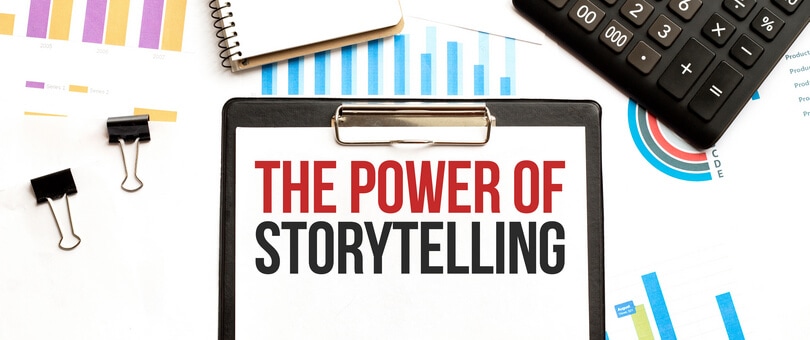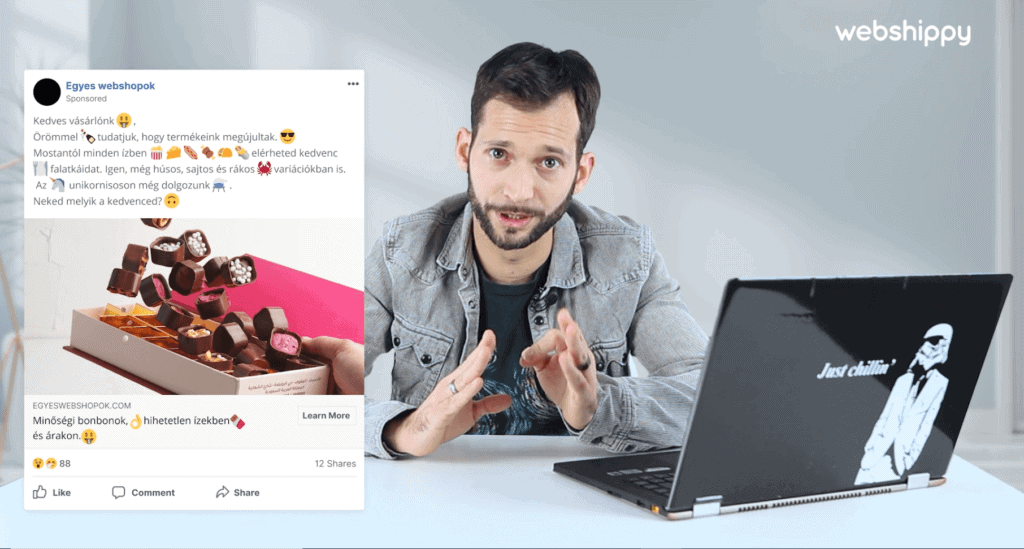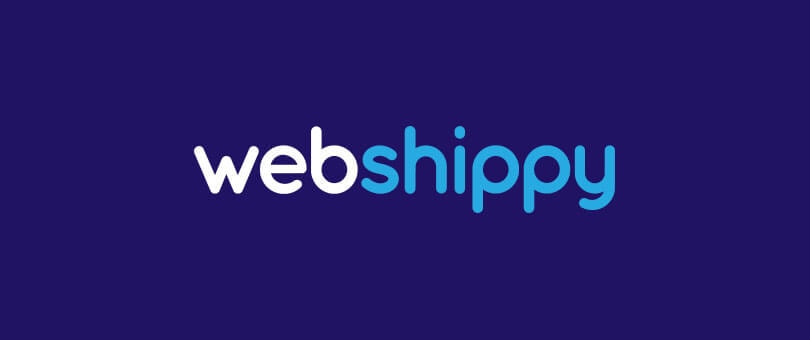Everyone in commerce is seeking the secret to effective sales tirelessly: Unfortunately, or fortunately, there is no such a thing as a Holy Grail. A good quality product, up-to-date website, enticing design are equally part of the ideal user journey or professional strategy, as well storytelling itself is.
In this long article, we’re going to take a deep dive into storytelling, and the role it plays in sales. We’re going to give you exciting examples of storytelling to show you how you can make it your most powerful tool to raise you way above your competitors. In case copywriting has been more of a burden for you (or your team), rather than a source of pleasure or money making opportunity, there’s no better place to be to change that.
Storytelling basics
Storytelling is actually a universal language that has been around since the beginning of time. Just think of cave paintings. It is already noticeable in the case of these 40000-year-old pieces of art patterns that increasing brand value, boosting sales and building were all factors in their creation.
The common aspect most powerful storytelling methods and examples share is that they are able to resonate with different target groups regardless of religion, native language, and financial situation. In order to create stories about your products and business that speak to people, you must become familiar with the 5 key criteria:
Entertaining or engaging plot
1. Entertaining or engaging plot
You must grab the attention of your reader: boring paragraphs and intros are out of the question! Don’t forget that your visitors are not reading a novel, therefore you don’t have the time and space for lengthy chapters to convince them why to keep on reading (and of course buying).

2. Make it memorable and adaptable
A good story is never merely about a product or brand. The visitor must feel part of the story, or at least relate to it if … In other words, the product and story must touch on potential pressure points, and offer solutions to them.
3. Universal stories are killer
You must strive to emotionally hook every visitor by giving them something they respond to. It’s a good idea to choose a basic idea that people can easily relate to. What are subjects familiar to everyone? Hope, love, uncertainty, fear, shame, success, failure, victory.
4. The right dosage of new information
The “I’ve learnt something today” feeling is key in storytelling. Since everyone is looking for easily-digestible, short and brief content, they will only read a long text if it’s full of intellectually stimulating (meaning enticing) descriptions. And of course, you must structure the valuable content in a smart way as well.
Valuable is the operative word: information, simple conclusions that bring the readers closer to their goals, largely promote sales. Think of the blogs and professional portals that you enjoy reading for instance. So, education is an essential element in storytelling.
5. Humour at the core of the story*
*Note, not always possible.
There are certain topics or brands where funny stories just don’t work. A funeral home can’t go for this tone. On the other hand, if the values of the product and humor are aligned, or can expand on one another, it’s well worth giving it a try.
Laughing builds trust. If you’re able to release a small dose of oxytocin in your viewer, you’re already on the way to building connection with them and luring them to the “buy” button. Obviously, in addition, we should place more creative, call-to-action buttons on the page, but this is another story for another time…
A perfect storytelling example from the past
These five ingredients alone are not sufficient to reach success just yet, so let’s read the first part of the world’s perhaps most effective sales letter. This part is most relevant in terms of storytelling, but the second half is excellent too! You can find the complete original, English version here.
By the way, the letter made about a 2-billion-dollars of profit…
Dear Reader: On a beautiful late spring afternoon, twenty-five years ago, two young men graduated from the same college. They were very much alike, these two young men. Both had been better than average students, both were personable and both – as young college graduates are – were filled with ambitious dreams for the future. Recently, these two men returned to college for their 25th reunion. They were still very much alike. Both were happily married. Both had three children. And both, it turned out, had gone to work for the same Midwestern manufacturing company after graduation, and were still there. But there was a difference. One of the men was manager of a small department of that company. The other was its president.

What Made The Difference
Have you ever wondered, as I have, what makes this kind of difference in people’s lives? It isn’t always a native intelligence or talent or dedication. It isn’t that one person wants success and the other doesn’t.
The difference lies in what each person knows and how he or she makes use of that knowledge.
And that is why I am writing to you and to people like you about The Wall Street Journal. For that is the whole purpose of The Journal: To give its readers knowledge – knowledge that they can use in business.
As we’ve mentioned earlier, the letter that created a tsunami of profit, and was re-published between 1975 and 2003 with minor modifications, doesn’t end here. However, this is the section that has made this letter the epitome of storytelling for sales letters.
Let’s take a closer look at the 7+1 aspects in the story that make it work so amazingly:
- Optimistic, movie-like opening scene.
- Exciting lead-in and progression in the story.
- Sudden, sharp change that sparks further interest.
- Unique structure: no lengthy paragraphs.
- Raising a question: seemingly addressing the reader, as if his/her opinion and answer mattered.
- Late appearance of the brand (we are used to having the product shoved into our faces at the beginning).
- Honest tone. This is “simply” a story that supports the statement and introduces the usp: “The difference lies in what each person knows and how he or she makes use of that knowledge.”
- The lesson and conclusion linked to the product.
Truth be told, this is a sales letter and its message can perhaps be translated into an eDM or newsletter. But what about slogans, headlines, a product description, an ‘About us’ section, a blog article or even a response to a comment?
Scroll on and you’ll see.
How does a slogan become a story?
We’re beginning with the slogan because it’s the toughest challenge. How to tell a story in often not more than 5-8 words or less?
Using a metaphor or analogy, like:
Skittles – Taste the rainbow
3 words, a complete, surreal story. It perfectly illustrates the feeling you have when you taste the tiny, sour candy, doesn’t it?
KFC – It’s Finger Lickin’ Good
Same formula. Although it has been changed due to the Corona virus (rightly) – they covered the term finger lickin’, but will probably return to it at some point. The tactile analogy works just as well as when we say “don’t imagine a purple elephant blowing on a trumpet”. You’ve pictured it too, right?
Another effective story telling method is to choose a message or idea that can be freely complemented, charged with the hopes, challenges and goals of the buyers.
Apple – Think different
Nike – Just Do It
Genius, universal messages that are easily adaptable to the mentality and needs of a wide-range target group.
Let’s take a look at headlines now!
Is a punchy headline the heart of the story?
We are dealing with very few words in case of headlines too. What can you do with 10 words? It’s impossible to tell a complex story, nevertheless, you can describe an experience, feeling, the starting point of the product, main emotional advantages – or at least one of these. Experiment! Be aware of the “more than…” type commonplaces. Unexpected, surprising and thought-provoking headlines work the best. “More than shoe-polish” is a devoid cliché, therefore does not belong to any of the positive categories.
Product description – finding the right tone
We’ve arrived to the point of the product description. This is a pivotal point where you have the chance to truly stand out and prove yourself. The key is to address the benefits (for the customers) along with using humor, creativity, and including the necessary information. The challenge is that the story (text) will only be effective if you find the tone of voice that perfectly resonates with your brand and visitors’ taste.
About us – What to share about ourselves?
And how? The ‘About us’ section is where the readers truly expect to read a great story. Not 8 paragraphs on explaining our growth in dates and figures. Pictures, videos, our own insightful testimony, honest reflection on our challenges and successes, the creation of the company, ground-breaking discoveries that make your product different from all 1785 competitors selling similar products or services.
In addition to content, in this section we must focus on visual aspects and technological options. A high-quality video interview, picture montage, drone video, animation or a virtual, 3D presentation of our shop, complementing our article, can make a huge difference.
Storytelling opportunities and challenges for blogs
You have about 700-1200 words when you write a blog– and to work well with Google too. You have only this many words to share a cool, useful, engaging story with your readers. If you are considering cornerstone content, don’t even think about stopping under a 2350 word count.
A good quality blog is an ideal territory for storytelling. However, you’ll need to comply with SEO requirements as well for your target audience to see your content.
And you’ll need to have quite a lot of experience to be able to write key-word optimized content while keeping an entertaining, light tone. It’s not easy to include an unconjugated 3 word, so-called long-tail keyword in your header without sweating bullets. Exactly for this reason, lead nurturing articles that don’t make you jump over hurdles with intricate key words, perform much better in terms of storytelling.
One of the great advantages of articles are the versatile formatting options, pictures, embedded stories, graphics and videos all available to max out your storytelling. Don’t forget that cave paintings were part of bed time rituals around the fire. And this is not all.
Coherence can be difficult in longer texts. You can jump over (literally) this hurdle using the “bucket brigade” technique. I ended the previous section in exactly this way. This method uses creative connections between blocks of ideas. These panel sentences transfer the reader from one paragraph to the other, the way firefighters or neighbors hand a bucket of water to each other to put out a fire. This is where the name comes from. Like “and this is not all”, “let’s jump right into it”, “perhaps you’ll be surprised to hear that…” or “you still don’t believe it?”.
Pay attention to intros with ads and posts
On most social media platforms, you can use many words, but that’s not always a good thing. In 25-30 characters – recommended in Facebook posts for the title and description – or the recommended 125 words for the first article can cause a lot of anxious moments. But these are “only” recommendations. Therefore, if you’re embarking on a longer piece, you must amp up the flair on your introduction to get the desired click and reader.
With posts, you can practically write as much as you want. However, since you have more limitations regarding formatting and placing pictures than on subpage, it’s well worth playing around with structuring and emojis in a clever way. Sadly, many people overuse emoticons, even in the middle of sentences, so that the word for the icon appears right next to the picture of the icon.
A fictional example:

This is extremely annoying while reading, so let’s stick to the use of these emojis for the introduction, separation and conclusion trio.
If you’d like to write a really long post, apply the “bucket brigade” technique we’ve already become well familiar with in the blog- and cornerstone content section.
Newsletter 2.0 – Custom-made storytelling
Everyone knows, and hates newsletters. Because most of them try to shove something down your throat. If you’re lucky, promotions. However, if one day you were to receive a similar one to the Wall Street Journal one, with real content you can actually learn from, you’d read it. I would even go as far as to say, you’d even appreciate it.
Before you send a newsletter, you might want to double-check if the “story” is one you would be happy to read. If the answer is yes, go ahead and send it! If no, tweek it based on the recommendations for blogs, without the key words of course.
Newsletters can be more appropriate than articles in terms of segmentation options that some good newsletter and automatization platforms provide. The target group that subscribed to your newsletter is organized into sub-groups, based on their activity ( e.g. what and how much they read, what they clicked on the given page), and you can tweak your content, in this case, story, accordingly.
Keep an eye on the comments!
A brand can be easily busted in their answers to a certain question/request/remark/complaint. This is only partially due to the fact that the colleague handling customer service or social media is often not the boss or the person who created the brand. Larger brands are able to jingle the corporate tone-of-voice on any given platform and we should copy their example.
But what does all this have to do with storytelling?
In the way that the image you carefully constructed through your stories in the eyes of your customers can easily tumble when they see an unanswered/wrongly-answered comment. On the other hand, a positive reaction that is honest, positive and in line with the brand image, generates a positive response even in the case of a complaint. If someone places a (rightful) complaint following the purchase of a product or service, you must respond to it with the values of your product in mind, in line with the story you built.
Otherwise, very rarely, an inter-brand comment tsunami can create a stream that the professionals and consumers banter about for weeks.
It’s time you got to know some great masters of storytelling
The name Nike is one, if not the best example of storytelling. In Greek mythology, Nike is the Goddess of victory. And what does Nike represent? Victory. Over ourselves, over our comfort zones, and of course over others. And how does this brand embody victory? Consistently, on every platform.
Our next runner-up is Mercedes. With the video “Sorry” they created one of the most ingenious stories of all time. The packaging (acting, settings, directing, sound, music, editing) and the message are perfect. This is one of my personal favorites.
Of course, let’s not forget about the outstanding Hungarian examples of storytelling as well. The intriguing and worthy case of Webshippy wonderfully illustrates how outlining, highlighting, motivation, and of course the supporting pictures and videos all promote identification with our goals and motivation.
As a conclusion, (and prize for reading this cornerstone material) we’ll show you a fun Hungarian example that you’ll love if you’re into goofy stuff in storytelling.
It’s a bold car ad that has been awarded ‘ad of the day’ for a good reason.
You can find hidden treasures, such as:
“A dirty polar bear-white Passat past its prime, previously owned by a non-female strongly nicotine addict person, on sale… the originally 90 horse-power, world-famous AHU-s TDI that Austrian farmer pappy with his sh*** rubber boots didn’t manage to destroy under 400 000 kms… swear its meter is not tampered with, maybe backwards… it took alpine salted roads to knock out the frame”
No comment. I think there’s nothing to add at this point. The car found its new owner in nano-seconds, in spite of being (to say the least), imperfect. The reason lies in the power of authentic, funny and honest storytelling.
I do hope you find in this article and video the support you need to create your own story. Let’s get started on storytelling and writing!
